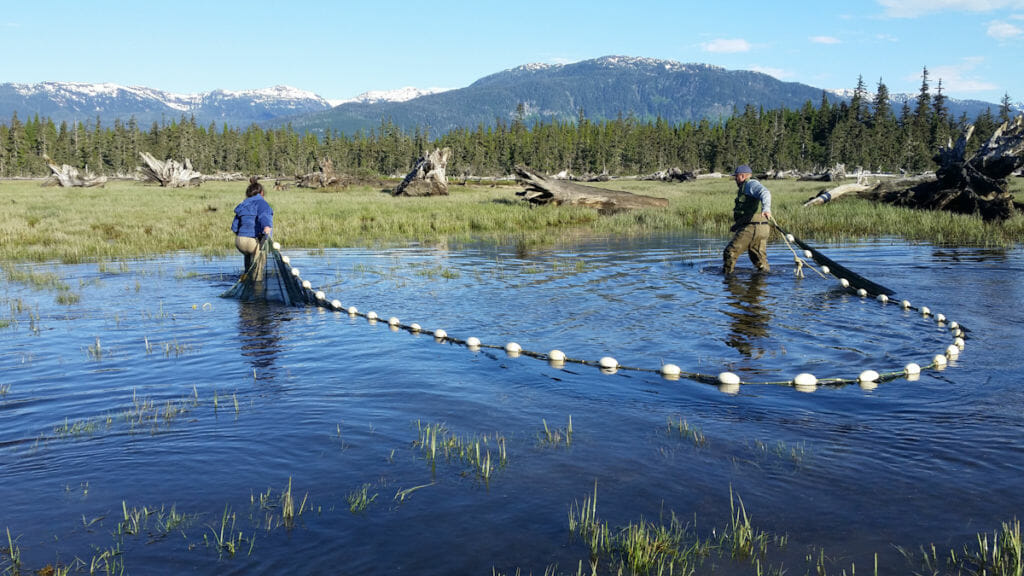Estimated Reading time

2 Mins
Coast Funds Contributes to New International Guide to Sustainable Conservation Finance
Coast Funds has contributed to a new guide to project finance for permanence, a model that pairs secure funding with strong partnerships to support conservation work in globally important ecosystems.

This month, Coast Funds was featured in Securing Sustainable Financing for Conservation Areas, a newly-published World Bank and World Wildlife Fund guide to project finance for permanence (PFP). The PFP model is designed to create the conditions needed for permanent, sustainable conservation of globally important ecosystems and is being increasingly considered around the world to support large-scale conservation efforts.
Coast Funds, established in 2007 to support conservation and economic development in the Great Bear Rainforest and Haida Gwaii, is one of the world’s first PFP initiatives. Through investments with Coast Funds, First Nations have already achieved significant outcomes towards economic prosperity, social empowerment, environmental conservation, and cultural vitality. Coast Funds contributed to the guide’s development, providing expert input on identifying finance mechanisms, fund disbursement, and overall implementation of PFP initiatives.
Over the past decade, Coast Funds’ directors and CEO, as well as leaders from participating First Nations, have shared advice and learning on PFPs. Global Indigenous peoples and WWF have leveraged and built on the knowledge and systems developed by Coast Funds and First Nations in the Great Bear Rainforest and Haida Gwaii.
 Securing Sustainable Financing for Conservation Areas, available for download, describes the components needed for a PFP initiative, outlines the steps for developing and establishing a PFP, and features case studies on PFPs at different stages of development.
Securing Sustainable Financing for Conservation Areas, available for download, describes the components needed for a PFP initiative, outlines the steps for developing and establishing a PFP, and features case studies on PFPs at different stages of development.
Dallas Smith, Coast Funds Board Chair, spoke at a launch event for the guide on Dec. 7 and shared lessons learned from the creation of Coast Funds.
“On the Pacific Northwest Coast, as First Nations, we are diversifying local economies and showing the world how stewardship and economic development must go hand-in-hand,” says Smith. “We take pride in seeing the PFP model, which we used to create Coast Funds, working in places around the world, and we’re grateful to learn and share with other Indigenous peoples who are developing their own PFPs.”
To be successful in the long term, conservation work requires predictable, enduring financing and operational support. While important progress on conservation has been made in the Great Bear Rainforest, Haida Gwaii, and other parts of the world, additional funding and supports are needed to help First Nations achieve their visions for conservation and stewardship.
Often, support for conservation comes in the form of one-time donations from private funders or limited-term grants from governments. While these sources of funding provide much-needed dollars to support individual projects, an incremental approach to financing can contribute to gaps in protection, continuity, or stewardship.
By designing projects for permanent protection, creating strong partnerships between organizations and communities, and using tested financial processes, PFP creates the conditions needed for lasting protection of ecologically and culturally important landscapes.
“It has been wonderful to work with WWF and the World Bank on this important guide to PFPs. As Coast Funds was one of the first PFPs, and not fully costed, we have learned much from others,” says Brodie Guy, Coast Funds CEO. “Alongside First Nations, we are actively working to complete their visions to interconnect and finance Indigenous-led stewardship across the landscapes and seascapes of the Great Bear Rainforest and Haida Gwaii.”
As First Nations’ stewardship responsibilities continue to expand, Coast Funds is exploring new opportunities for supporting Nations’ efforts to secure diversified, self-determined, and sustainable sources of revenue for funding Indigenous-led stewardship.
To learn more about Coast Funds and how the PFP model is supporting First Nation-led conservation in the Great Bear Rainforest and Haida Gwaii, download our 10-year review.
